There are more than 4,700 archaeological sites spread across the country, but only a few of them have been adequately explored. Here are some of the best archaeological sites in Macedonia.

Today, Macedonia is one of the smallest countries in Europe, a living proof that all good things in life come in small packages. However, don’t let its size fool you; Macedonia is a country with a rich history.
In fact, there are more than 4,700 archaeological sites spread across the country, but only a few of them have been adequately explored. There are many ancient sites in Macedonia, with the oldest ones dating back to the Paleolithic age. All of these can’t be covered in a single article, but we’ll do our best to cover some of Macedonia’s most fascinating archaeological sites.
Skip Ahead To My Advice Here!
Skopje Fortress (Kale), Skopje

Sitting on a cliff above the Vardar Riverbank, the ‘Kale’ has been keeping an eye on Skopje for centuries. The fortress was initially built by the Byzantines in the 6th century and modernized by the Ottomans.
Still, numerous sources connect the location of Skopje’s most famous fort to remnants of human civilization dating back to 4,000 years B.C. The oldest detailed description of the fort dates back to the 14th century when Turkish writer Celebi described Kale as a stronghold adorned with 70 bastions, hundreds of buildings, soldier quarters, munition depots, three huge gates, an underground cave that connects the fort to the river, and a bazaar with 2,000 shops.
Today, the iconic Kale is one of Skopje’s most popular tourist attractions and home to some of the city’s biggest festivals.
Isar (Tetovsko Kale), Tetovo
Located two kilometers from the city center, Isar is a fortress that dates back to the Late antiquity era. The fort was restored and re-enforced in 1820 by Ottoman Pasha Abdurahman. At the southern side of the fort, you can find remnants of Hellenistic pithos, imbrex, and the gula, making many historians scratch their heads (because the fort was built during the Byzantine era).
Unfortunately, Isar was severely damaged during the military conflict of 2001, but it’s one of Tetovo’s most important landmarks even today.
Samuel’s Fortress, Ohrid
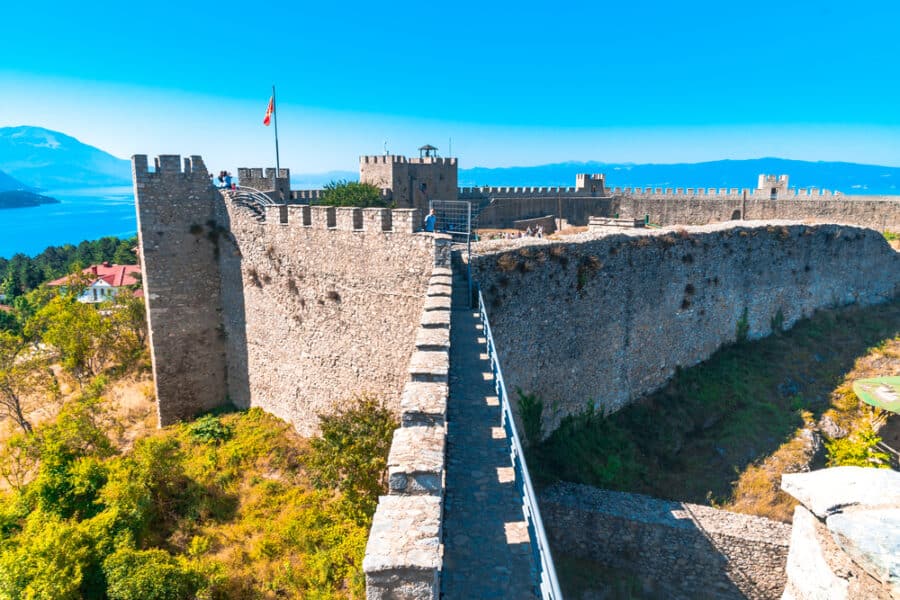
During a short part of his reign, Tzar Samuel transferred the capital of his kingdom to the city of Ohrid, where this massive fort was built. The first fort at this location was constructed during Phillip V’s reign, but its present-day appearance dates back to the 4th century A.D.
During the fort’s glory days, it was one of the most unapproachable fortifications in the region that even survived the notorious Ostrogoths’ attacks. When Samuel chose this location for his capital’s stronghold, the fort was further strengthened and upgraded.
Today, Samuel’s Fortress is one of the most famous attractions in Ohrid because of its historical significance and the fantastic view of the city you can get at the top.
Scupi, Skopje
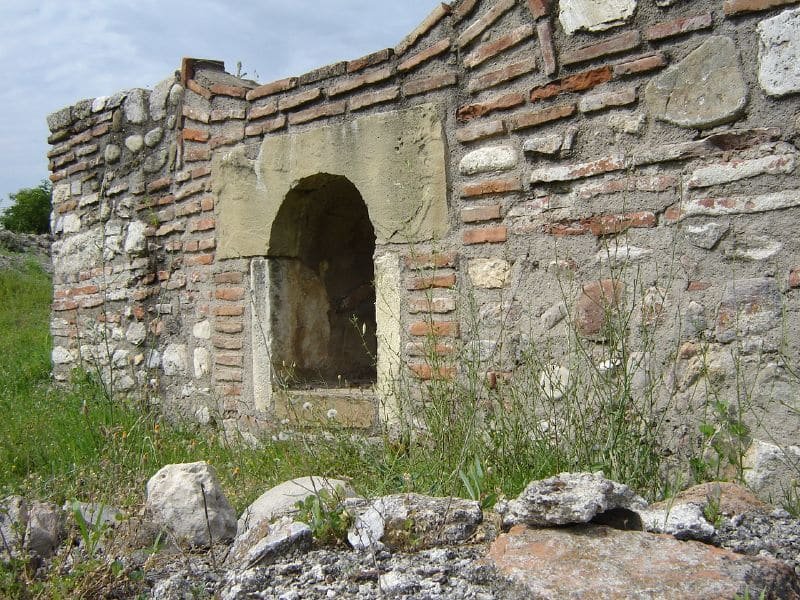
Scupi is an old Roman settlement that dates back to somewhere around the 3rd century B.C. After the Macedonian-Roman wars, Scupi was turned into a military camp for the veteran legionnaires. It established itself as one of the region’s trading hubs throughout the years due to its excellent location. Scupi’s glory days ended in 518 A.D. when a major earthquake struck, destroying most of the city.
Today, Skupi seems entirely forgotten by the local authorities, even though it has the potential to become one of Skopje’s most famous tourist attractions. If you want to visit, you need to take bus number 21, get off at the last station and take a short 15-minute walk on the road leading to the local graveyard.
Brands We Use And Trust
Tauresium, Taor, Skopje
Tauresium is an ancient archaeological site that features the remnant of what was once a great city that was the birthplace of King Theodahad of the Ostrogoths and Byzantine Emperor Justinian I. This archaeological site is located around 20 kilometers away from Skopje in the municipality of Zelenikovo.
According to several historical sources, there was a big castle in the center of the town. Still, most of Tauresium was destroyed by the same earthquake of 518 that destroyed the ancient town of Scupi.
The Castle Above The River Pčinja, Skopje
When driving along the E75, halfway between Skopje and Veles, near the confluence of the rivers Vardar and Pcinja, you’ll see the remnants of a fascinating medieval fortification.
Even though historians don’t know much about this castle, this location right above the gorge certainly gives this fortification a great ‘natural defense.’ Recently, archaeologists discovered traces of human settlements dating back to 3500 years B.C.
Stobi, Veles
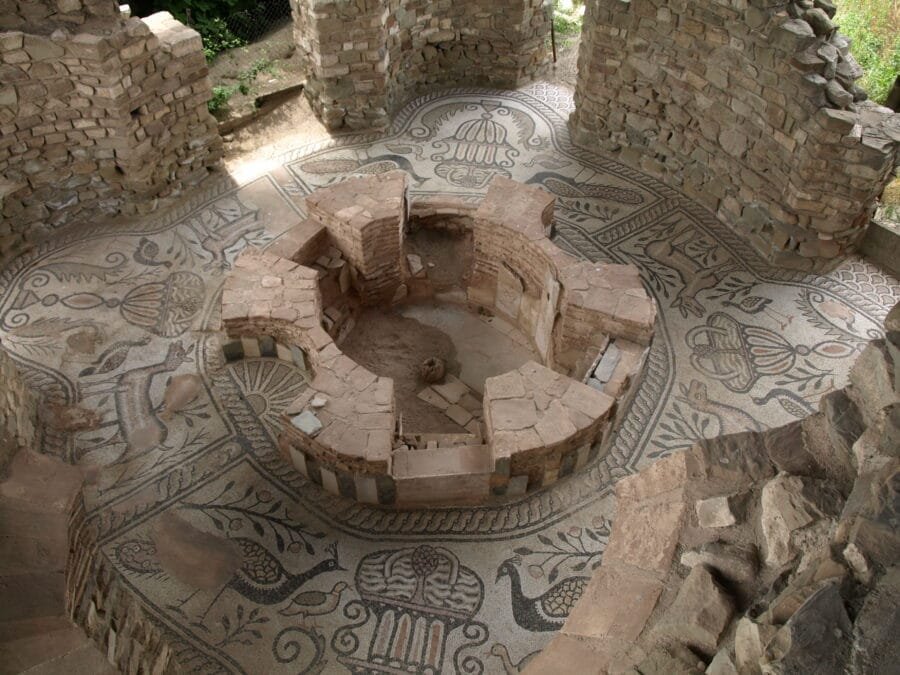
Located at the confluence of the rivers Crna and Vardar, Stobi is one of Macedonia’s most famous archaeological sites. Stobi was first mentioned in 197 B.C. in an ancient script referring to the victory that Phillip V’s troops achieved against the Dardanians but the oldest-discovered artifacts found on the site date back to the 7th century B.C.
During the Roman era, Stobi was a regional trading hub because of its terrific location in the heart of the Macedonia province. The town had several medieval basilicas, a Roman necropolis, an amphitheater, and several Hellenic graves. Stobi was one of the most important medieval centers in Macedonia until the 6th century. The massive earthquake of 518 destroyed most of the city (many scientists believe that this earthquake was one of the most powerful earthquakes in the Balkan region has ever witnessed).
Kokino Observatory, Kumanovo
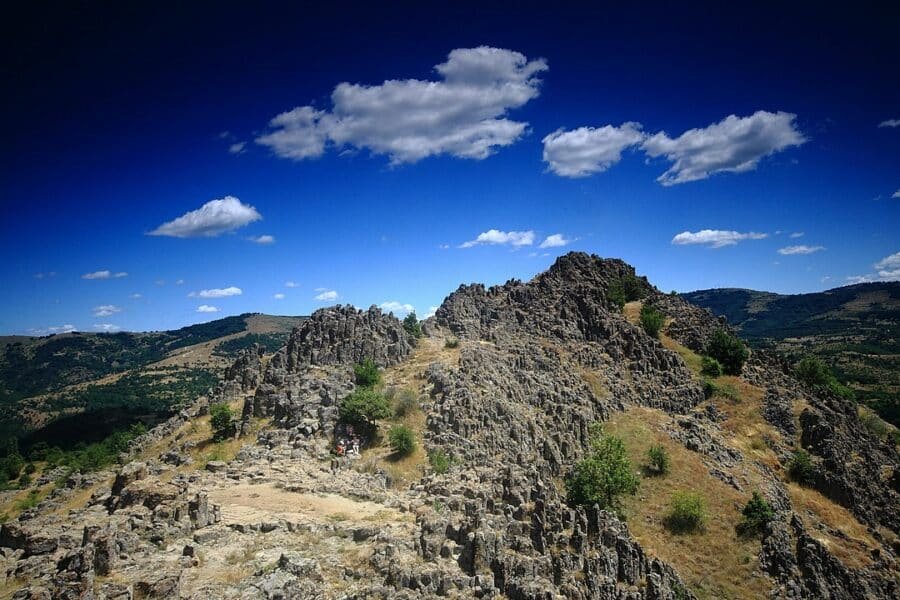
The Megalithic Observatory of Kokino is a newly-discovered archaeological site (2001) that happens to be one of the world’s oldest space observatories. According to NASA, Kokino is 3,800 years old, making it the fourth oldest observatory in the world. However, the observatory is just a part of this archaeological site that spreads across 5,000 square meters and consists of two platforms with an elevation difference of 19 meters.
Today, the Kokino archaeological site is becoming increasingly popular among international tourists and is on UNESCO’s World Heritage Site tentative list.
The Fifteen Holy Martyrs Of Tiberiopolis, Strumica
Triberiopolis was the ancient name of the city of Strumica. The fifteen holy martyrs were people who lost their lives because of their Christian beliefs under the orders of the Roman emperor Julian the Apostate.
Shortly after this, they were celebrated protectors of the city and were even proclaimed as saints. There are many churches in and around Strumica devoted to the fifteen holy martyrs of Tiberiopolis.
Today, in the place where the martyrs were executed, there’s a church, and inside the church, you can still see the martyr’s tombs.
Markovi Kuli, Prilep

Markovi Kuli (Marko’s Towers) is an archaeological site overlooking the city of Prilep. This site was named after medieval Prince Marko Mrnjavcevic, who was known as a protector of the city.
Several artifacts that date back to Roman times were discovered, but the site is mainly associated with being the place where Vukasin’s palace was situated. The site had several towers, gates, buildings, and even a church. After the death of Prince Marko, the fort was conquered by the Ottomans.
Today, Marko’s Towers are one of the most picturesque and fascinating tourist attractions in Prilep.
Vardar Hill, Gevgelija
Vardar Hill (Vardarski Rid) is one of the most fascinating archaeological sites in Southern Macedonia. The site features the remnants of an ancient town that dates back to the early Roman era and numerous artifacts that date back to as early as the 13th century B.C. Excavations have revealed that the city had several large buildings, a monumental stoa, and an acropolis.
Today, Vardar Hill is a popular picnic destination among locals. Still, the local authorities are building better tourist facilities around the site and creating trails and informational boards to attract more tourists.
Heraclea Lyncestis, Bitola
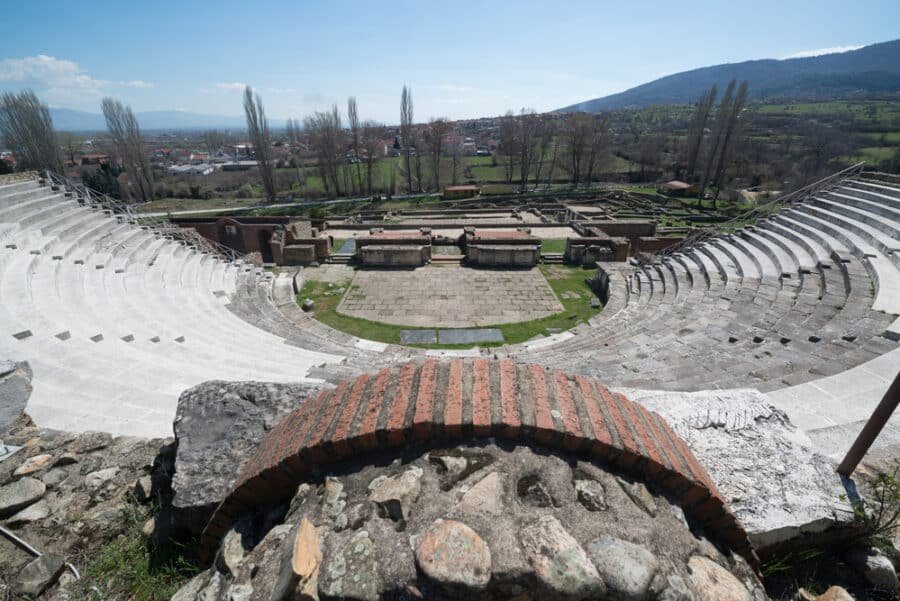
The city of Heraclea was founded by Phillip II of Macedon (father of Alexander the Great) in the 4th century B.C. After the fall of the Macedon Kingdom, the city was one of the most essential stops on Via Egnatia (one of the oldest roads in the region).
Heraclea became an important Episcopal seat during the early Christian Era and was later conquered during the Slavic Invasion.
Today, Heraclea is a part of the modern city of Bitola, and its fascinating, well-preserved mosaics attract a lot of visitors from different parts of the world.
Ancient Theater, Ohrid
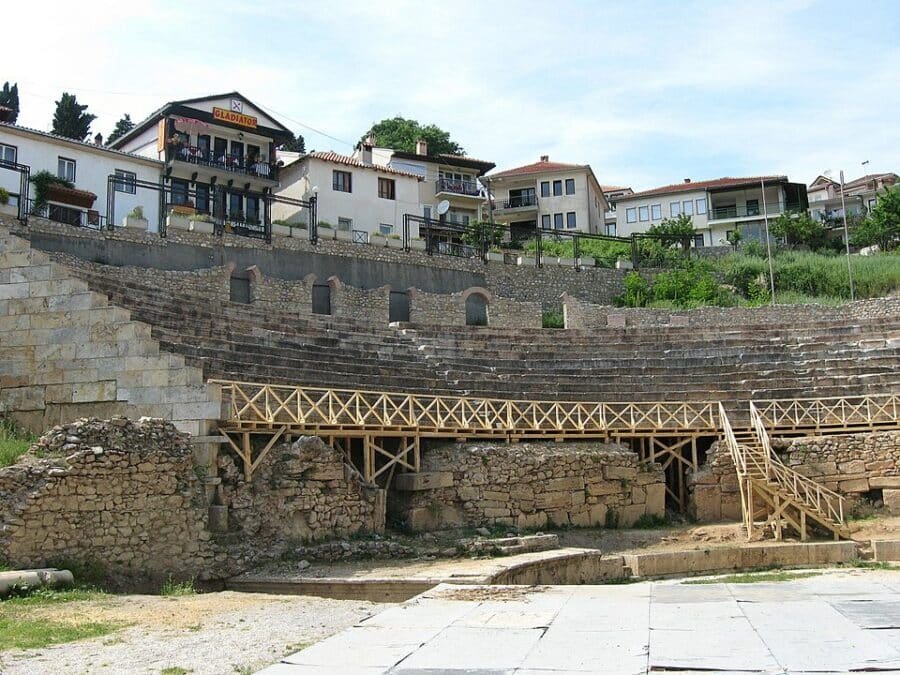
The Ancient Theater in Ohrid is the only Hellenistic amphitheater in Macedonia (all other remaining amphitheaters are Roman). Unfortunately, because only the lower portion of the theater is still standing, it’s difficult to tell the theater’s capacity.
The theater is built at the perfect location, surrounded by two hills that minimize the effects of winds and give the whole area incredible natural acoustics. There are some indications that this amphitheater was used for gladiator fights and Christian executions.
Today, the ancient amphitheater is located in one of the most touristy neighborhoods in Macedonia – Ohrid’s Old Town. It is visited by thousands of people every year and hosts a myriad of plays, concerts, and other manifestations.
Isar, Stip
Isar Fortress is to Stip what Kale is to Skopje. It’s one of the most famous landmarks in the city and one of the town’s best viewpoints. It’s located 160 meters above sea level and was the city’s administrative center for centuries. Excavations have shown that the fort had walls that were at least 50 meters tall, four high towers on every side of the fort, and an underground tunnel leading to the Bregalnica Riverbank.
Today, Isar is one of the most popular places in Stip and a place that hosts a lot of local festivities and celebrations.
Move This Adventure To Your Inbox & Get An Instant Freebie

No spam. Unsubscribe at any time.
Carevi Kuli, Strumica
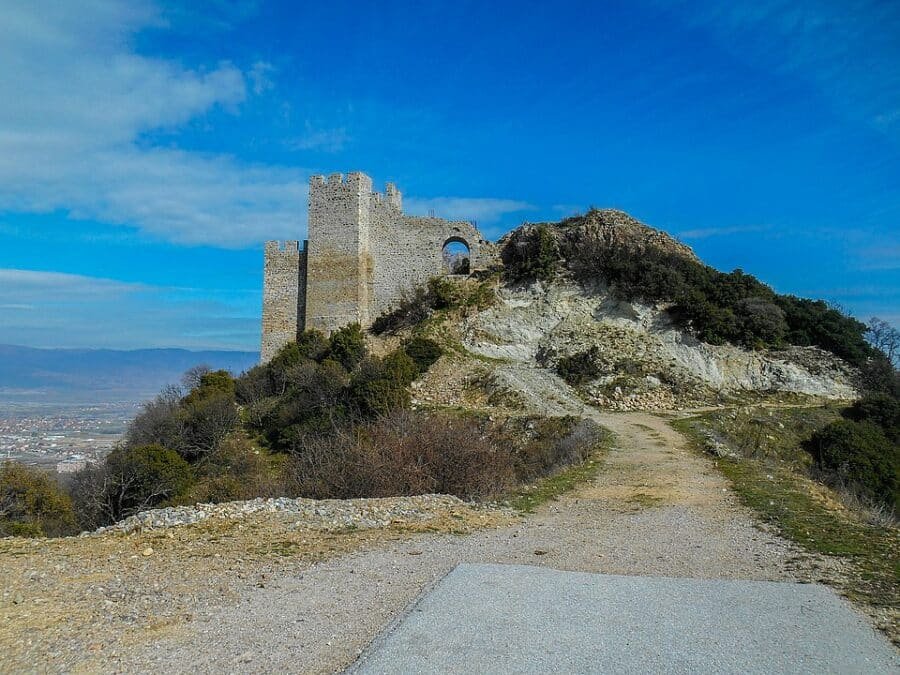
Carevi Kuli is an archaeological site that overlooks the city of Strumica. This was once a fort that was very difficult to conquer due to its excellent location. The site is located 450 meters above sea level, it isn’t easily accessible, and it allowed a clear view of the entire region to whoever had control of it.
Today, Carevi Kuli is very popular among locals who like trekking and taking long walks, and from here, you can get some of the most amazing views from the vibrant city of Strumica.
Bargala, Karbinci
Bargala is a Byzantine fortified town located 12 kilometers east of the Stip city that dates back to the 4th century A.D. when this site was used as a Roman military camp. After the fall of the Eastern Roman Empire and the Byzantine empire’s rise, the city flourished, especially during the rule of Justinian I.; the city had 20 observation towers, two Roman baths, and an episcopal basilica.
Today, this archaeological site is located in the middle of nowhere, but it’s easily accessible and connected with an asphalted road. If you’d like to get the chance to see some old, rare, Byzantine mosaics, you definitely shouldn’t miss visiting Bargala.
Did you like this list of the best archaeological sites in Macedonia? Which one of these archaeological sites seemed most interesting? Please let us know in the comments below!
- Ohrid – Macedonia’s UNESCO Site
- Top Macedonia Beaches And Cafes
- How To Travel Macedonia Like A Local
- How To Rent A Car In Skopje
- Your Guide To Backpacking Macedonia (And The Rest Of The Balkans)
- How To Travel In The Balkans
- Explore Macedonia Through Traditional Food
- Incredible Macedonia Winter Destinations
- Learn How To Speak Macedonian
- Affordable Luxury Hotels In Macedonia
- Most Interesting Museums In Skopje
- Guide To Macedonian Wine


You keep on giving terrible innacurate information.
Chasing the donkey explains alot about your organisation.
We get it, you’re Greek and are anti “Macedonia”. Help yourself dude and don’t visit our page anymore…. Daniel will keep writing what he likes about his country and you don’t have to read it.
Right on the money.This are Greek nationalistic ignorant uneducated comments.
The country is called North Macedonia, not Macedonia. Just to clarify.
It’s Macedonia
To the best of my knowledge DNA tests carried out sometime in the past don’t clarify that north Macedonians were actually from the ancient Macedonians. From what I understand the people currently living in north Macedonia are actually Slavs.
I remain
J.K
Nice information. Can people visit the royal tomb in Prilep or the ancient town of Bylazora?
Genetic Studies & DNA testing done by Scientists (IGENEA), have confirmed that atleast 30% of the population of the Republic of Macedonia are descendants from the ancient Macedonians.
I love the accuracy I didn’t know about all the sites I had been to one of the ones u mentioned and is very interesting. as a Macedonian my self born outside of Macedonia I would like to know more as to our DNA and heritage as we all know dna tests today the samples are in accurate. As I can see there are ancient Hellenic names also and relics in our country are so the question I ask is are we part similar to greek part Slavic what would be our decent be I’m just open and want to see what you know as you seem to know a lot about our past I loved the ancient sites so that gives me an Insite.